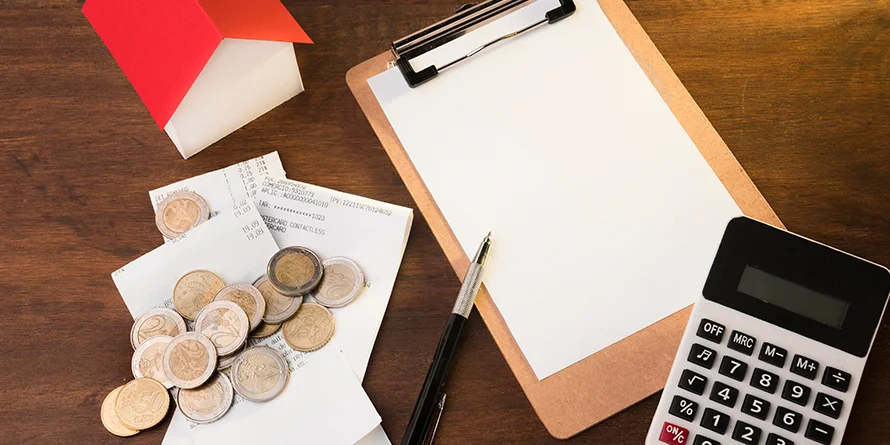
When you lease a property, signing that document may just seem like a box to check. However, here's the kicker: if you don't pay the correct stamp duty on a rent agreement, only then is your contract not legally enforceable!
This is because this small government tax applied to a legal document ensures that your tenancy is legally protected and recognized by law. This will apply to every signed rental agreement, stamp paper, or e-stamp rental agreement. Whether you are a first-time tenant or an experienced landlord, learning about this process can help you protect your rights and money.
We will look into why you should pay stamp duty for a rent agreement, and how it is the easiest way to ensure you are on sticky ground legally.
To put it plainly, stamp duty is a charge to the government for validating your rent agreement. In essence, it’s not just a piece of paper; it is your legal proof of tenancy.
By preparing a stamp paper rent agreement or a rental agreement e-stamp paper, your payment will give the document certain admissibility in court proceedings. This means that in the event of a dispute, you will have a piece of evidence recognised by the courts.
Stamp duty is typically paid using e-stamping or by purchasing rental agreement stamp paper for an amount at a specified value. The amount of rent agreement stamp paper and e-stamp price will vary based on the state, and based on the monthly rent amount, the rental deposit, and the length of the agreement.
Why Stamp Duty Is Important for a Rent Agreement?
If a tenant refuses to leave your property or the landlord does not return a deposit without the stamp, the rent agreement (if unstamped) will not be legally supported. To have the document legally valid and reliable evidence of tenancy, pay this small charge.
Not paying the stamp duty may result in penalties and will not be transparent. To maintain accurate records of tenancy with the Provincial Government (if applicable). In addition, landlords will have protection for misuse of their properties, while tenants will have protection against unlawful eviction.
So yes, this little stamp for a rent agreement carries a lot of weight!
Your rent agreement stamp paper value depends on a few main factors:
Example Calculation:
If your monthly rent is ₹25,000 and you deposit ₹1 lakh for 11 months in Maharashtra: Stamp Duty = 0.25% × [(₹25,000 × 11) + ₹1,00,000] = ₹962.50 (approx.)
To check exact figures, you can use an online rent agreement stamp duty calculator for your city.
Keep in mind — registration fees are separate (usually ₹1,000–₹2,000). So, if you’re budgeting for a rental, always include paying stamp duty for the rental in your checklist.
There are three simple ways to pay your stamp duty for a rental agreement:
Go to the SHCIL or any state registration website, complete the application, process your payment, and you will be able to download your e-stamp paper rental agreement immediately.
You can still buy rental agreement stamp paper and print your rental agreement on the paper. This is still the preferred method of purchasing for short-term rental agreements.
You can also go to the Sub-Registrar Office and pay directly there.
Today, rent agreements via e-stamp paper are the most convenient option, with no queues, no delays, and no additional paperwork.
Avoiding stamp duty might save you a few hundred rupees, but it may definitely create significant problems:
On the whole, we believe it is a very small expenditure for long-term peace of mind — a much better alternative than navigating legal issues later on.
Always check the rent agreement stamp paper cost and the corresponding duty rates applicable to your state.
In conclusion, ultimately, stamp duty on a rent agreement is more than a formality; it can be your shield against any legal risks.
Whether renting a studio apartment, city flat, or your first independent house, you should ensure your agreement is stamped and registered. This is the easiest way to guarantee your rights and foster trust between landlords and tenants.
And when you understand how to pay stamp duty for rental, you are not just signing a paper, you are signing peace of mind.
Yes. All rental agreements executed on appropriate stamp paper are valid for a rental agreement longer than 11 months when properly stamped with stamp duty.
Usually, it is the tenant, but this can be negotiated as part of the lease agreement.
Yes. For example, in states like Maharashtra and Karnataka, it is possible to e-stamp a rental agreement and register online on their website for rental agreements.
Your lease will become invalid in the event of a potential legal dispute and could attract fines or penalties.
Renew it every time the lease term or rent changes — typically every 11 months or yearly.